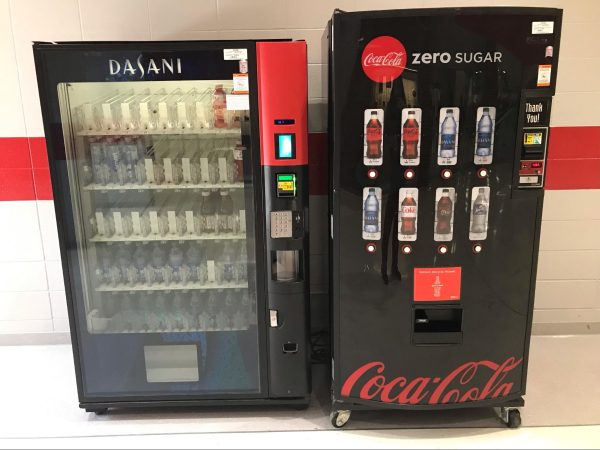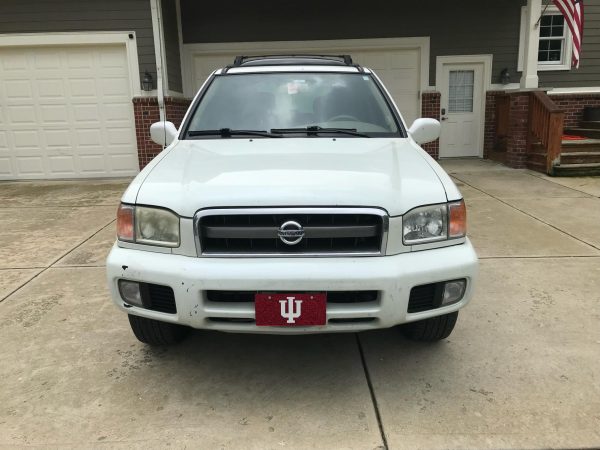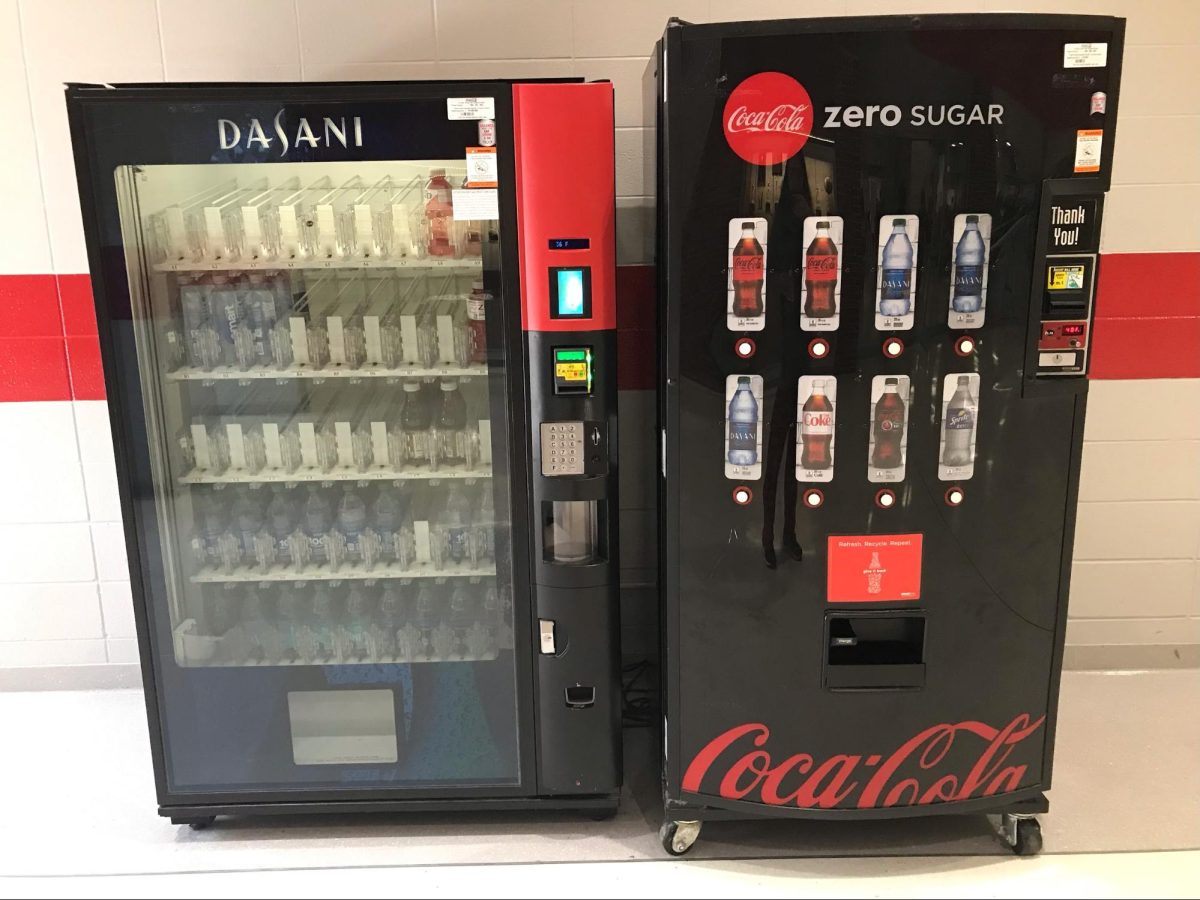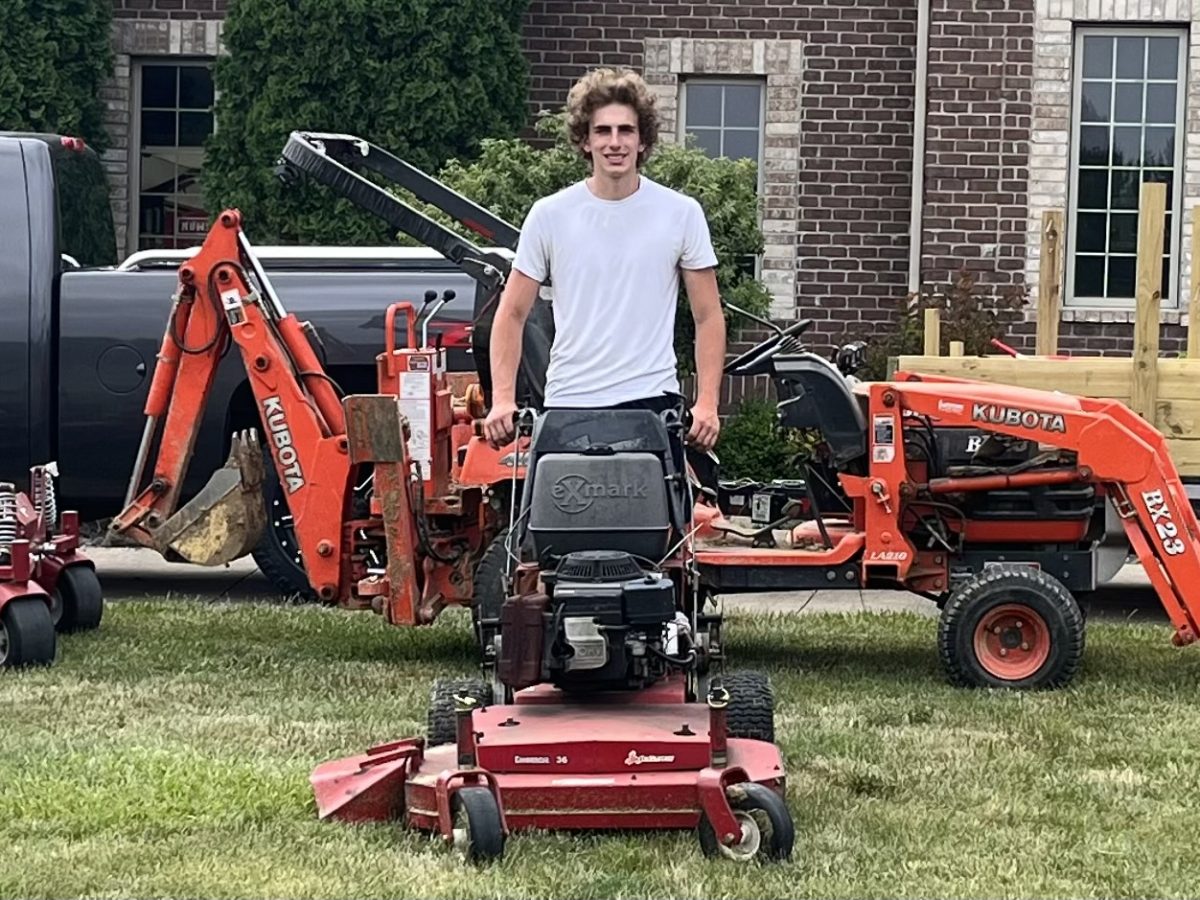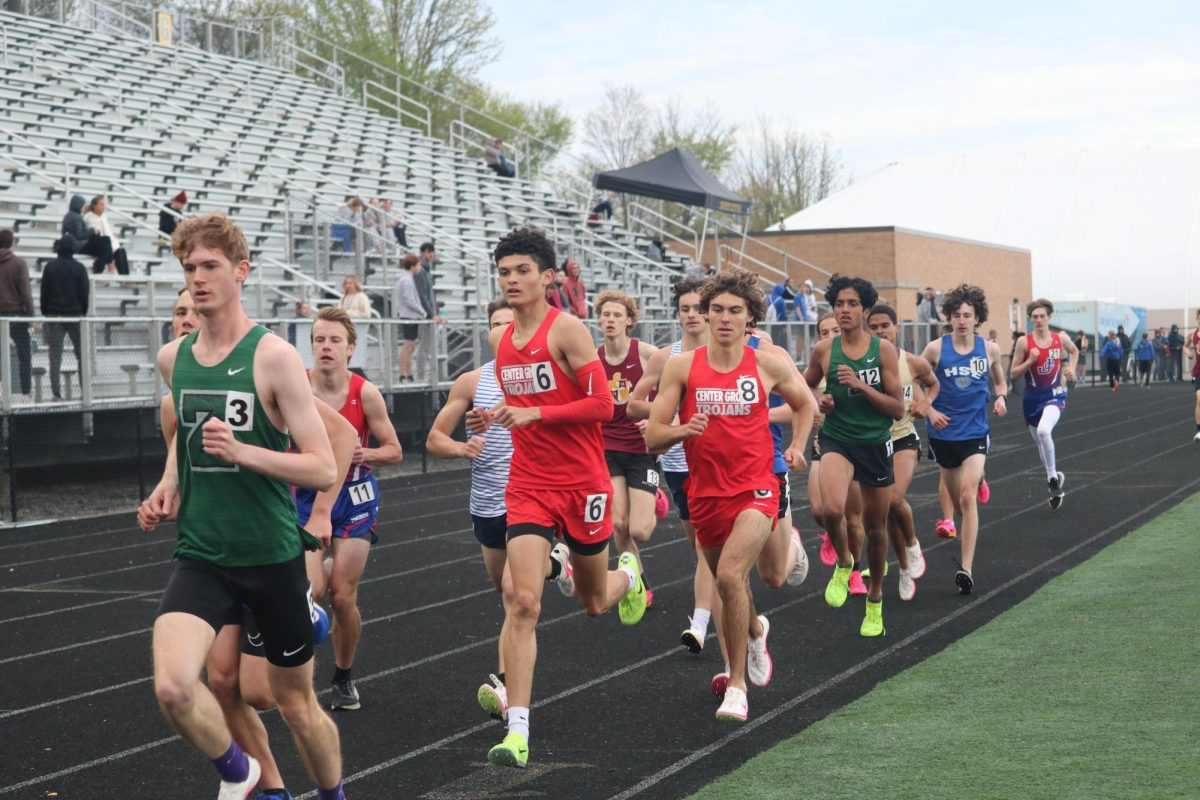In the United States, approximately two-million people have run a half-marathon, which is just under 0.06% of the population. While there are both staff and students at Center Grove High School who have accomplished this feat, social studies teacher Eric Howe, sophomore Baylor Winkelmann and science teacher Andrea Teevan make running a half-marathon an annual tradition.
“I’ve done three marathons, but I can’t even begin to count the number of half-marathons I’ve done,” Howe said. “I typically will race the Monumental and the mini in a calendar year. I’ve done others but those are my go-to’s.
Howe has been an avid runner for over a decade and coaches the Center Grove Middle School Central cross country and track team. Between being a full-time teacher and a coach, Howe has had to find ways to balance those duties with his year-round training schedule.
“I have a friend who I run in the mornings with during cross country season while I’m coaching. Those runs I set aside for the kids, so during the season, I get up early three or four times a week, and we’ll go on runs before school,” Howe said. “I do a long run on the weekend, which can be anywhere from eight to upwards of sixteen miles. Those are usually social runs with a group of people, and we just go out and talk and have a good time.”
Howe has a half-marathon PR of 1:29:18, which is a 6:49 mile pace for 13.1 miles. To reach that level of fitness, Howe incorporates other types of runs into his training regime to ensure that he can go fast as well as far.
“I do pace-specific runs too. One of my favorite workouts, which I’ll pull out of my hat when I get into a funk, are progression runs. Those are my favorites. I’ll start at an eight-minute pace then just cut ten seconds off each mile,” Howe said. “Sometimes I’ll go out with just the intent of pushing the pace as much as I can for a specific number of minutes, but then, there are other times where I just need to get out the door. Those are the times where it’s just lacing up my shoes and not caring about how slow or fast. It’s just a matter of getting thirty minutes in.”
Throughout his years of running, Howe has learned that the training defines the race.
“For any race, just getting to the start line is 80% of it. Staying focused through a training cycle, not getting injured, and having the patience and discipline to listen to your body is the most difficult part,” Howe said. “I think a successful training cycle is what defines your race. But in terms of being in a race, if you’re racing far there’s always going to be a moment in the last quarter of a race where you just question everything. Your very existence is called into question.”
Despite the struggles that come with it, Howe has found a love and passion for running. His next race will be the Carmel Marathon in April of 2024.
“It’ll be my first marathon since 2006, but I think I’ve grown, and I have a lot more running maturity now,” Howe said. “And I hope that the running maturity and the knowledge is what gets me under that 3:59 mark, to a successful start line, and through a successful training cycle.”
Just like Howe, Winkelmann, who runs on the cross country and track team, also runs half-marathons in his free time.
“The first half-marathon I ran was the Indy Mini-Marathon with [sophomore] Roman Heller when we were in 8th grade, and we ran a 1:48,” said Winkelmann. “The next year, I ran it again with Cameron Cox in 1:28 and got the top 500 finishers medal.”
Winkelmann builds off his track training to annually run a half-marathon in the spring. However, since the longest high school track event is just two miles, Winkelmann remarks that it is a mental and physical jump to be able to race 13.1.
“Our track training helped us prepare because we were really in shape for the fast stuff, but we weren’t as prepared for the longer things. But our aerobic capacity was still really high and the 3200-meter race prepared me because I was already used to being mentally tough,” Winkelmann said. “Starting a few weeks before, I go on long runs on the weekend to prepare myself for running the race. Since I’m already in shape for track, it’s just about getting my mind and body adjusted to running for such a long time at once.”
Despite being prepared, Winkelmann has always found that race day comes with its own unique set of challenges.
“The Indy Mini-Marathon is a really popular race, so you have to do a lot of weaving at the start. It’s hard to stay focused on maintaining your pace when you are constantly dodging people, but once you get a few miles in, it starts to thin out,” Winkelmann said. “Mile 11 is the hardest because you can’t see the finish line yet, so you know that you’re close, but not close enough that you can speed up, so it’s really mentally taxing. The mental battle with yourself towards the end is definitely the most challenging part. You want to quit, but you know that you can’t yet.”
However, Winkelmann has found that the training and struggles of race day are well worth the accomplishment of completing the course.
“My favorite part is finishing the race because I get to be congratulated by my family. I love the finish because all of the other runners are so excited to have completed something that difficult. It just makes the environment really great,” Winkelmann said. “Right now cross country and track keep me busy, but when I’m older I’d like to run half-marathons a few times a year instead of just once.”
Teevan has also found a love for running half-marathons. She has been running them since 2012, and in that time has completed a total of 44 half-marathons with a personal best of 2:09. However, Teevan’s main motivation for running stretches far past only racing for time.
“I run more for the mental-health benefits of running as opposed to the competitive side of it. I first started running because it was my ‘me time’. I was a new mom and that was my time to get out of the house and fill that with something,” Teevan said. “It’s also socialization because I always run with Ms. Milligan, and we talk and de-stress together from our weeks. Then, after we run, we usually enjoy a good cup of coffee and get breakfast, so the socialization aspect of it is also really nice.”
When she first began running, Teevan recalls that the idea of running a half-marathon seemed far out of reach. Though it took time, she began to become more comfortable with the training required to finish all 13.1 miles. Now, 44 half-marathons later, the necessary training has become second-nature.
“When I first started running I never thought I would be able to do a half-marathon. Kids always come into my room and say ‘I don’t know how you do that’ or ‘I could never run a half-marathon’, and I just laugh because I know that I said that once too,” Teevan said. “Before a half, we [Teevan and Milligan] will work our way up from an hour to two hours in ten minute increments. Throughout the week, we will do three short ones then a long run during the weekend. Once you can get your feet used to about 5-8 miles, the volume after that isn’t as bad. It’s just difficult to get into that oxidative cycle where your body is used to long runs.”
Years of experience have left Teevan with knowledge on not just how to train for a half-marathon, but what it’s like to run one.
“My favorite race to run is definitely the Monumental. I just love the course and the nature of the race. It’s a runner’s race, so you don’t have any fair-weathered people, just people that are there to run,” Teevan said. “Mile 10-11 is where it gets really hard. You have the adrenaline rush of the last mile because everyone is cheering you on, but that all also depends on how well you’re trained.”
Just like Winkelmann and Howe, Teevan loves running and sees herself completing many more half-marathons in the future.
“I always say that someday when I’m buried, I want to take my medals and magnets with me,” Teevan said with a laugh.








